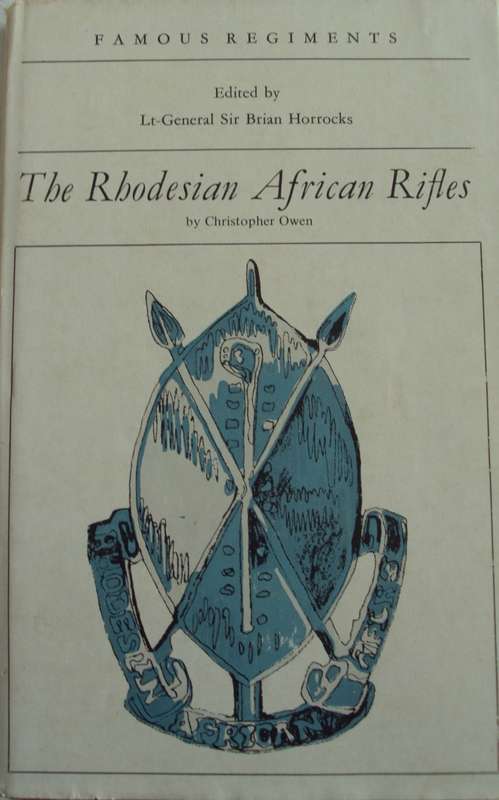

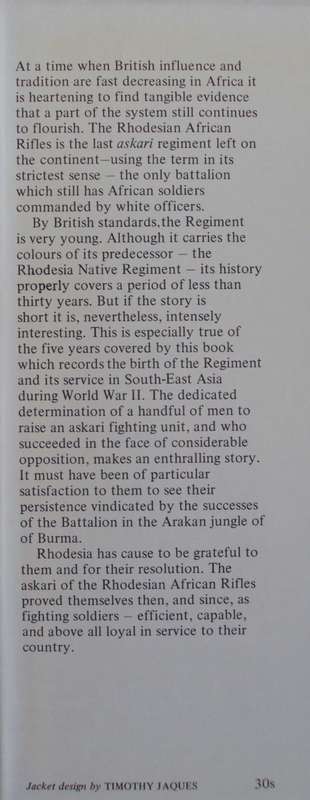
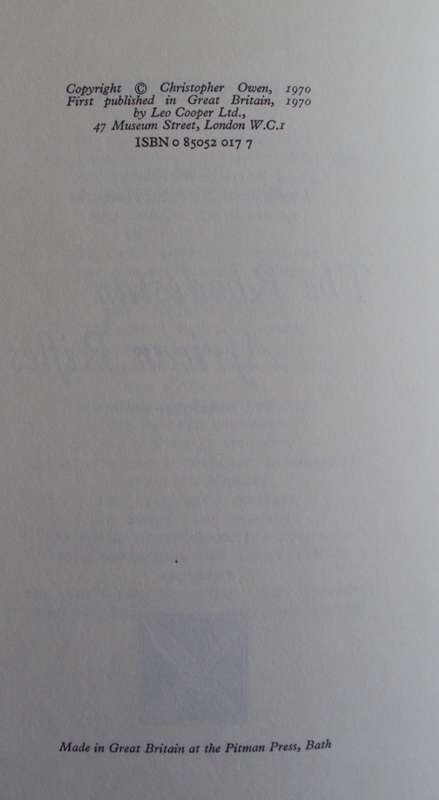
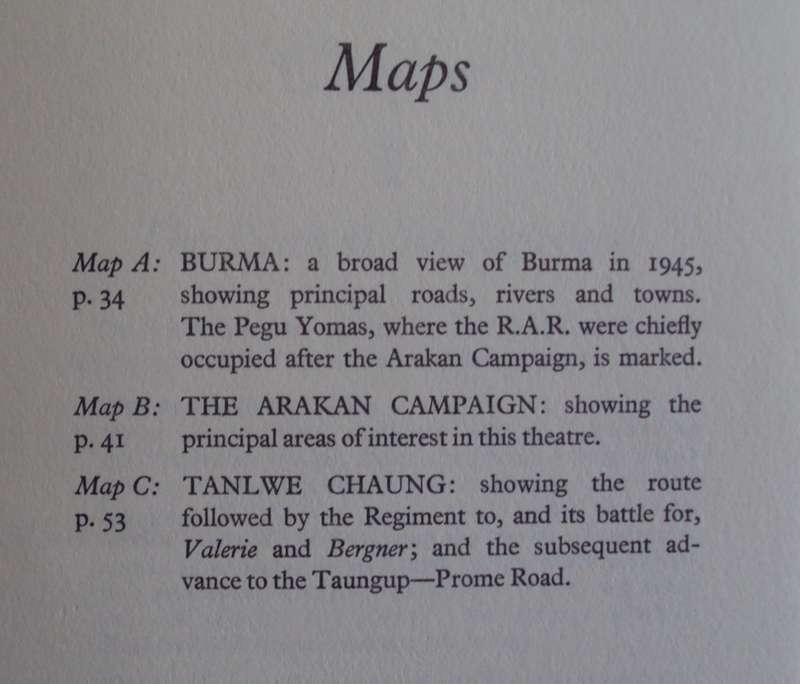
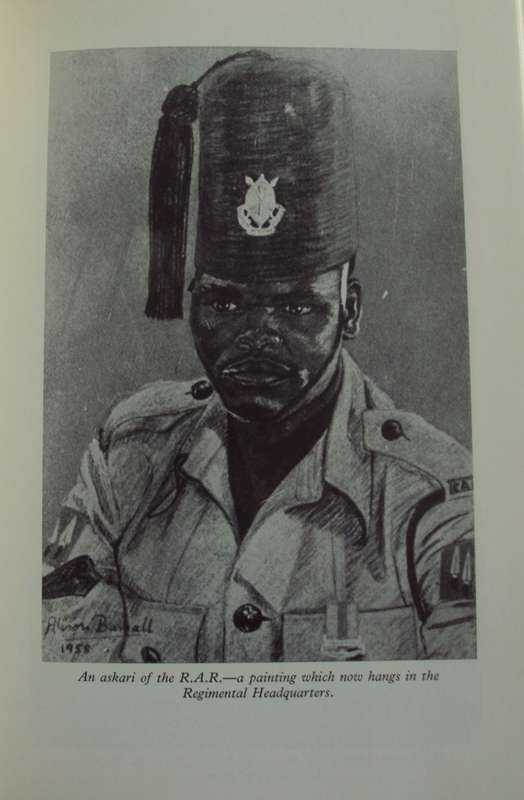
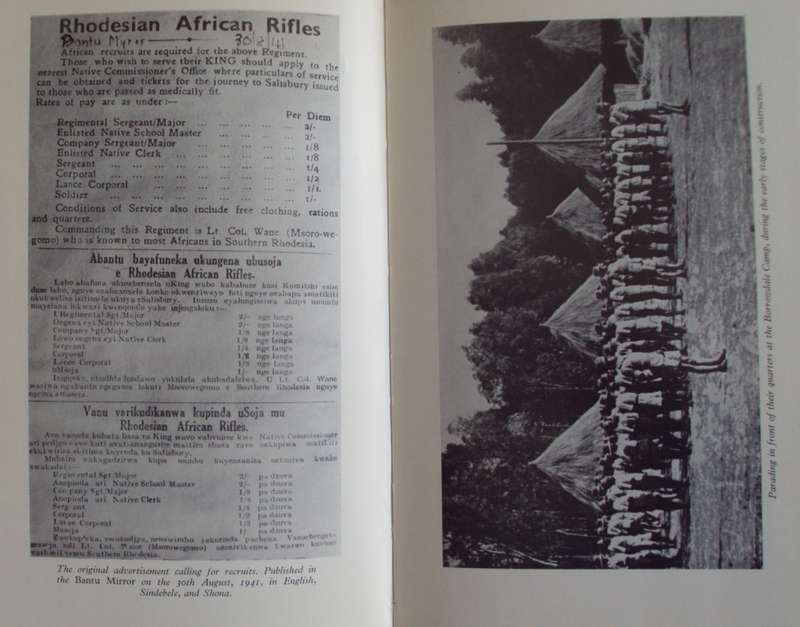
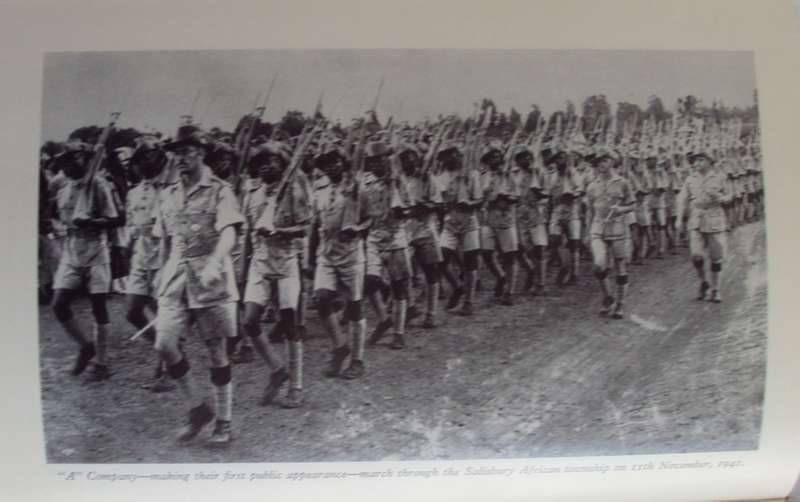
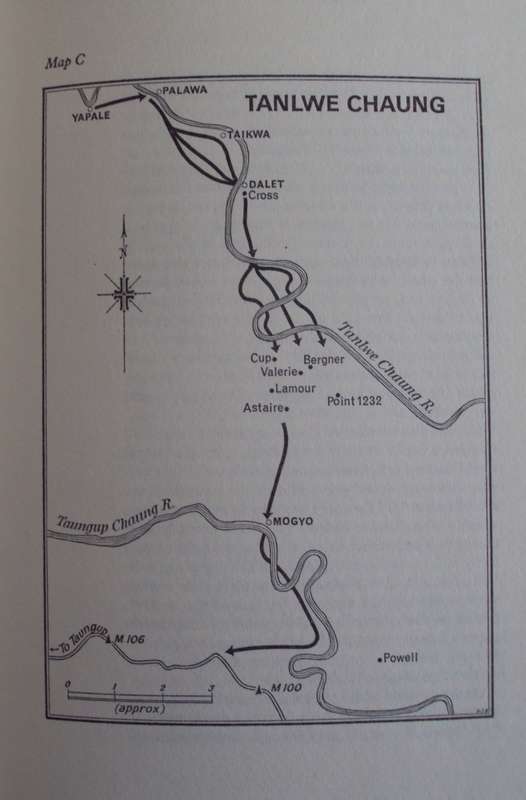
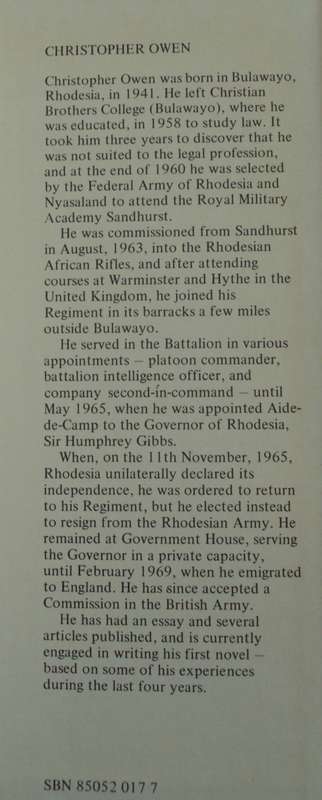
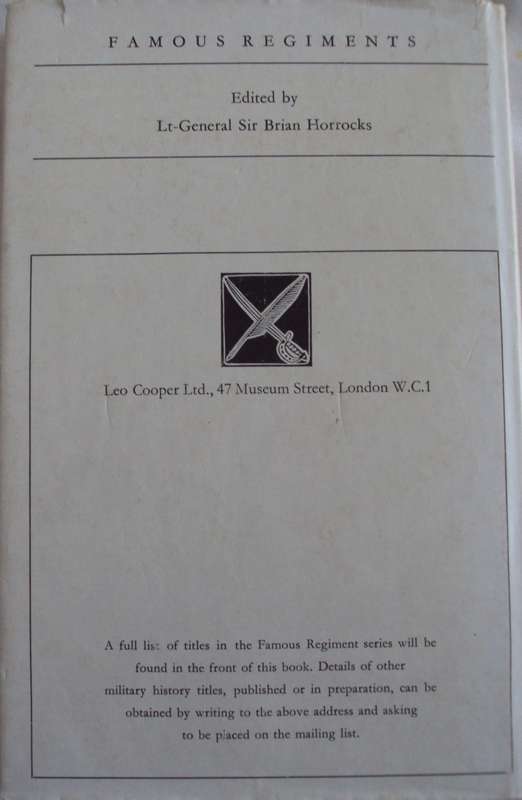





Famous Regiments - The Rhodesian African Rifles Christopher Owen
Check my rate
View locations
| Main centres: | 1-3 business days |
| Regional areas: | 3-4 business days |
| Remote areas: | 3-5 business days |
















| Main centres: | 1-3 business days |
| Regional areas: | 3-4 business days |
| Remote areas: | 3-5 business days |
Famous Regiments - The Rhodesian African Rifles
Author: Christopher Owen Edited by Lt-General Sir Brian Horrocks
Publisher: Leo Cooper Limited
Edition: First 1970
ISBN: 0 85052 017 7
Language: English
Condition: Good. Clean copy with tight binding
Binding: Hardcover with dustcover
Pages: 75. Print with images.
Additional Information
The Rhodesian African Rifles (RAR) was a regiment of the Rhodesian Army. The ranks of the RAR were recruited from the black African population, although officers were generally from the white population. The regiment was formed in May 1940 in the British colony of Southern Rhodesia.
The RAR were officially declared the successor to the Rhodesia Native Regiment (RNR) which had existed in World War I from 1916 to 1918, and was granted the RNR's battle honours earned fighting in the East African Campaign. The RAR were the second-oldest regiment of the Rhodesian Army, after the Rhodesia Regiment which was raised in 1899.
The RAR used the "greens" uniform and wore slouch hats as headgear.
After disbandment, selected members of the RNR formed the Askari Platoon of the British South Africa Police (BSAP) at Government House in Salisbury. Non-Commissioned Officers (NCOs) from this platoon provided the instructors when the RAR was formed in 1940 to fight in World War 2.
From 1940 to 1944, the RAR recruited and trained to battalion strength and developed its camp at Borrowdale near Salisbury. From 1944 to 1945, the battalion fought against the Japanese as part of Field Marshall William Slim's 14th Army in Burma, after which the regiment returned to Southern Rhodesia.
They were deployed overseas twice more, to Egypt (1951 to 1952) in response to the Suez Crisis and to Malaya (1956 to 1958) during the Malayan Emergency.
Between these external deployments, the RAR provided security to Air Force bases within Southern Rhodesia.[] During that period Queen Elizabeth the Queen Mother, presented the colours to the regiment at a parade at the Borrowdale Camp (1953) and the regiment moved to a permanent barracks, at Heany (later renamed Methuen) on the outskirts of Bulawayo (1954).
After their return from Malaya in 1958, the RAR began to undertake 'duties in aid of the civil power' in response to civil unrest occurring in Salisbury, Bulawayo and Wankie, and in Northern Rhodesia. By 1961, these duties had extended to internal security operations in Northern Rhodesia including deployment along the Congolese/Northern Rhodesia border to prevent fighting spilling over from the Katangese secessionist war. After the Central African Federation was dissolved in 1962, to be replaced by the separate nations of Rhodesia, Zambia and Malawi, the RAR was returned to the sole command of the Rhodesian Army.
With the Unilateral Declaration of Independence by Rhodesia from Britain, on 11 November 1965, members of the military wings of the Nationalist movement began an escalating series of incursions into Rhodesia with the aim of subverting the local population and overthrowing the government. This was known as Chimurenga (Liberation War).
The RAR fought throughout what came to be known as the 'Rhodesian Bush War' until the Ceasefire of February 1980. In the course of this conflict, the regiment grew from one to three battalions, established a regimental training depot and expanded further to incorporate the Independent Companies of the Rhodesia Regiment. Every African Soldier was a volunteer.
In February 1980 ZANU, the political party now led by Robert Mugabe, renamed ZANU (PF) for 'Popular Front', won the first universal franchise General Election and came to power, renaming the country Zimbabwe. Incorporated into the Zimbabwe National Army but retaining its regimental identity, the RAR fought one last decisive battle, at Entumbane near Bulawayo in 1981, when they totally defeated a major ZIPRA uprising. By April 1981, the name 'RAR', together with its insignia, had been replaced by the numerical nomenclature and Staff Corps badges of the Zimbabwe Army.
Please note that we refer the right to close our auctions at any time.
Please refer to all images for condition, as this forms an integral part of the description.
Payment to be processed within 2 days of auction closing
The item is second hand and sold as such with no warranty or guarantee implied, expressed or given.
Rhodesia | Rhodesian | Selous Scout | SAS | Bush War | RLI | BSAP |UDI | Ian Smith | Rhodesiana | Recce | RLI | Peter Stiff | Lovett | Moorcraft | Moorcroft | Pamwe Chete | Badcock | Grey Scouts | Green Leader | Lovett | RAR | Chris Cocks | Rhodesian African Rifles | Famous Regiments